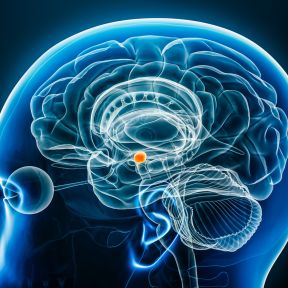Neurodiversity and the Benefits of Autism
Neurodiversity is a term (and a movement) predicated on the idea that autism and other developmental or learning conditions are differences to be embraced rather than diseases to be cured. The neurodiversity movement primarily centers around autism but encompasses other conditions as well. It is not without controversy, because families on the severe end of the spectrum often struggle for support and treatment, and worry that a non-medical model could discourage both therapeutics and research on the underlying genetics of the condition.
The neurodiversity paradigm dovetails with the gifts possessed by some on the spectrum. People with autism can have powerful abilities in memory, recall, or math. They can excel at organization and attention to detail. Some may even have the ever-fascinating savant syndrome.
On This Page
Neurodiversity is the idea that variation in brain function exists across the population. Differences such as autism and ADHD have existed throughout human history and are not due to faulty neural circuitry. Rather than viewing them as such, neurodiversity embraces autism as a different way of thinking and behaving.
Proponents of neurodiversity believe that society should work to eliminate stigma, create accommodations, and fully accept people with autism as capable of contributing to society. The paradigm stands in contrast to the medical model, which conceives of autism as a disease to be treated or cured.
The term was coined by an Australian sociologist, Judy Singer, who had autism herself. It was popularized by American journalist Howard Blume beginning in the late 1990s. Although neurodiversity primarily refers to autism, there are also conversations around neurodiversity and Tourette’s syndrome, epilepsy, dyslexia, and bipolar disorder.
Differences in thinking have helped humanity progress in science and art throughout history. When everyone thinks about a problem the same way, someone with autism might approach it differently and identify the solution.
The fixation with patterns, systems, and routine characteristic of autism can be valuable in the workplace. People with high functioning autism may be excellent in positions of software testing or quality control, for example.
Tension exists in the autism community around neurodiversity, propelled by the diverse nature of autism itself. Proponents of neurodiversity, often high functioning adults with autism, argue that individuals with autism should be embraced for who they are. Treating the condition as a disease, and training children to suppress their authentic selves, is wrong and dehumanizing.
Opponents of neurodiversity are often family members of those with severe autism. They believe that autism is a disability and that treatment is critical to alleviate suffering for those with severe autism and their loved ones. Accepting autism as a neurological difference undermines the struggles they experience on a daily basis.
Some believe in a balance between the two perspectives. Scientists and clinicians should continue to develop effective and affordable therapies for autism. At the same time, society should combat stigma and make schools, offices, and housing more accommodating.
Savant syndrome is when an individual with autism or another disability has extraordinary skills in a particular domain. For example, a savant may be a gifted classical musician or complete puzzles extremely quickly. One explanation for a savant’s ability is that additional brain regions are recruited and rewired to support memory.
Kim Peeks, on whom the movie Rain Man was based, falls in line with that theory. Peeks read with remarkable speed: He read both pages of a book at the same time, each with one eye, with excellent content retention. He also had an incredible memory for directions, history, politics, and sports statistics. Peeks did not have a corpus callosum, which facilitates communication between the two hemispheres of the brain. Reading is typically rooted in the left hemisphere, but Peeks may have developed the ability in both hemispheres, leading to his savant abilities.
Savants capture the popular imagination and are often portrayed in movies, TV shows, and books. About half of people with savant syndrome have autism, but only about 10 percent of people with autism are savants. The concept may be overrepresented in media depictions of those on the spectrum.
Twice exceptional, or 2E, refers to children or adults who are both intellectually gifted and have a learning or developmental challenge. This may be the case for people with autism, ADHD, or dyslexia.
A person’s gift may mask a disability, or a disability may mask a person’s gift. Whether a child is identified as twice exceptional in school or an adult decides to seek out a diagnosis later in life, acknowledging both can help individuals find support or services.














